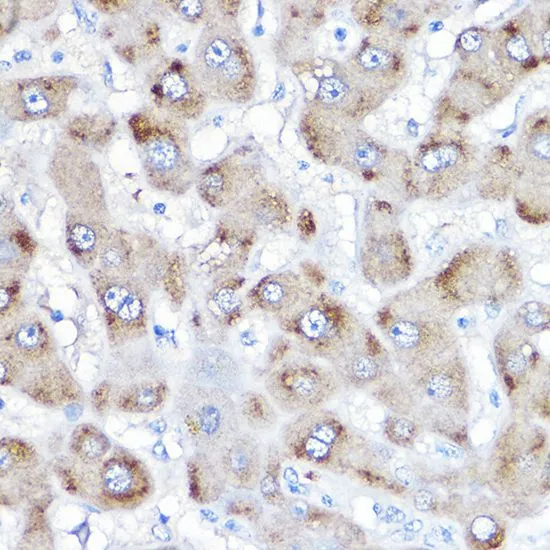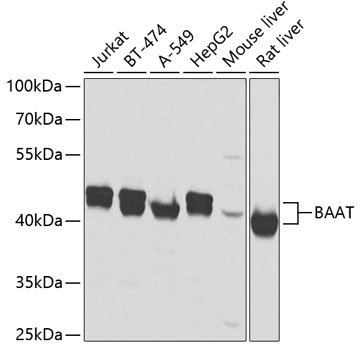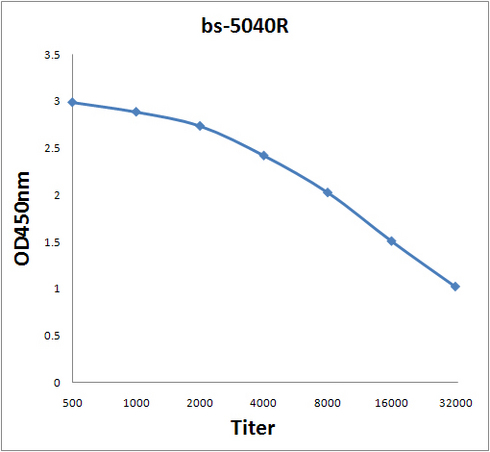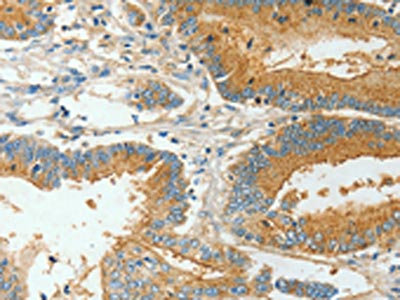
WB analysis of various sample lysates using GTX55529 BAAT antibody. Dilution : 1:2000 Loading : 25microg per lane
BAAT antibody
GTX55529
ApplicationsWestern Blot, ImmunoHistoChemistry, ImmunoHistoChemistry Paraffin
Product group Antibodies
TargetBAAT
Overview
- SupplierGeneTex
- Product NameBAAT antibody
- Delivery Days Customer9
- Application Supplier NoteWB: 1:500 - 1:2000. IHC-P: 1:50 - 1:200. *Optimal dilutions/concentrations should be determined by the researcher.Not tested in other applications.
- ApplicationsWestern Blot, ImmunoHistoChemistry, ImmunoHistoChemistry Paraffin
- CertificationResearch Use Only
- ClonalityPolyclonal
- ConjugateUnconjugated
- Gene ID570
- Target nameBAAT
- Target descriptionbile acid-CoA:amino acid N-acyltransferase
- Target synonymsBACAT, BACD1, BAT, FHCA3, HCHO, bile acid-CoA:amino acid N-acyltransferase, bile acid CoA: amino acid N-acyltransferase (glycine N-choloyltransferase), bile acid Coenzyme A: amino acid N-acyltransferase (glycine N-choloyltransferase), bile acid-CoA thioesterase, choloyl-CoA hydrolase, long-chain fatty-acyl-CoA hydrolase
- HostRabbit
- IsotypeIgG
- Protein IDQ14032
- Protein NameBile acid-CoA:amino acid N-acyltransferase
- Scientific DescriptionThe protein encoded by this gene is a liver enzyme that catalyzes the transfer of C24 bile acids from the acyl-CoA thioester to either glycine or taurine, the second step in the formation of bile acid-amino acid conjugates. The bile acid conjugates then act as a detergent in the gastrointestinal tract, which enhances lipid and fat-soluble vitamin absorption. Defects in this gene are a cause of familial hypercholanemia (FHCA). Two transcript variants encoding the same protein have been found for this gene. [provided by RefSeq, Jul 2008]
- Storage Instruction-20°C or -80°C,2°C to 8°C
- UNSPSC12352203








